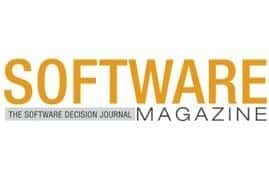
In the short span of a decade, innovative electronic devices such as laptops, tablets, smartphones, and Internet engagement channels have made an indelible impact on everyday life, revolutionizing the means and speed in which people communicate, socialize, and purchase goods and services. Combining the personal and business use of high-tech devices and applications, however, is a more recent phenomenon that’s blazing an irreversible trail
While the growing movement of versatile devices in the workplace provides flexibility and offers a range of options to increase employee productivity, it puts the modus operandi of back-office technology in peril, leaving IT departments precariously teetering on the edge of falling from hero to zero.
The Driving Force Behind Advancing Technologies
The consumerization of IT, coupled with Bring Your Own Device (BYOD), is more than just a trend. Steered by a younger, more mobile generation of employees—raised with connected devices and uninhibited by the notion of work/life balance—BYOD is the driving force behind the inspiration of advanced technologies with the potential to make the workplace more efficient and employees more productive. Yet, this same force that is driving technology in a direction of infinite possibilities is also at work in an opposite direction, significantly impacting IT administrators who feel pressured to protect their technology universe with black-hole policies where nothing is allowed to pass through nor escape.
From the outside, some see IT departments as having a reputation for using “no” as the default response to newer technology or operational requests, whether to buy more time or as a genuine attempt to protect company policies and procedures. Although not an ideal or sustainable solution, IT departments may be at risk of becoming marginalized within enterprises as the speed of technology surpasses the speed of IT response. As today’s employees can walk into a store, buy a phone, and access company email within minutes, bypassing IT completely, a “no” from IT often only results in an unproductive and unnecessary game of cat and mouse—inevitably ending in frustration and internal conflicts.
Contrary to popular belief, IT does not intentionally oppose innovation, forcing employees to search for covert means to bypass IT and ultimately risk company security. However, the onus will invariably fall on IT administrators—whose survival depends on a willingness to adapt—to search for solutions that redirect policy-based collaboration and mitigate shadow IT, rather than identify new ways to block users from accessing sensitive information and connecting to company networks.
While providing unmatched technical expertise, IT departments face unique challenges and important decisions, particularly in relation to their shifting roles within the organization, along with employee demands regarding accessibility and flexibility. Bridging the chasm will require administrators to not only provide a common goal and a starting point from which all players have an equal advantage, but also transform from a technology provider to a technology partner. In other words, IT must evolve from the traditional department of “no” to the supportive and collaborative department of “now.”
Harnessing the Power of the Cloud
Traditional IT provisioning is often a slow and manual process, while new cloud-based solutions are automated, allowing for increased flexibility, improved agility for administrators, and enhanced efficiency that helps support a mobile workforce. With cloud management, organizations can cost-effectively support and manage a range of endpoint systems, from desktops to virtual workspaces, while improving access to vital applications and databases. In addition, these advanced solutions optimize performance and support virtualized environments without adding complexity, allow administrators to quickly find and fix infrastructure issues, provide end-to-end performance monitoring and configuration management, minimize disruptions, and reduce time, cost, and risks during migration to new environments.
As new cloud technologies emerge, collaboration between IT and the business is essential. To seize an expanded role while keeping pace with innovation, IT teams must take the lead and assume the position of driver and trusted advisor—allowing organizations to create competitive advantages by utilizing cloud solutions to solve complex technology challenges.
While many enterprises already employ a hybrid of on- and off-premise solutions, how many end users have Dropbox or Box and utilize Salesforce or Office 365? As this major shift occurs—with or without the consent of IT—organizations are bound to question if the IT department is an enabler or roadblock to innovation.
Collaboration and Innovation
By determining where and how IT departments can best support the enterprise and enhance the productivity of employees, they are sure to foster a culture of collaboration and innovation. Ultimately, this protection of the organization’s most valuable assets will secure IT’s place and guide companies through the next wave of new technology.
Ashley Leonard is the president and CEO of Verismic Software and a technology entrepreneur with 25 years of experience in enterprise software, sales, operational leadership and marketing, including nearly two decades as a successful senior corporate executive and providing critical leadership during high-growth stages of well-known technology industry pioneers. Verismic Software, Inc. provides cloud-based IT management technology and “green” solutions focused on enabling greater efficiency, cost-savings and security control for users, all while engaging in endpoint management.
Nov2014, Software Magazine







